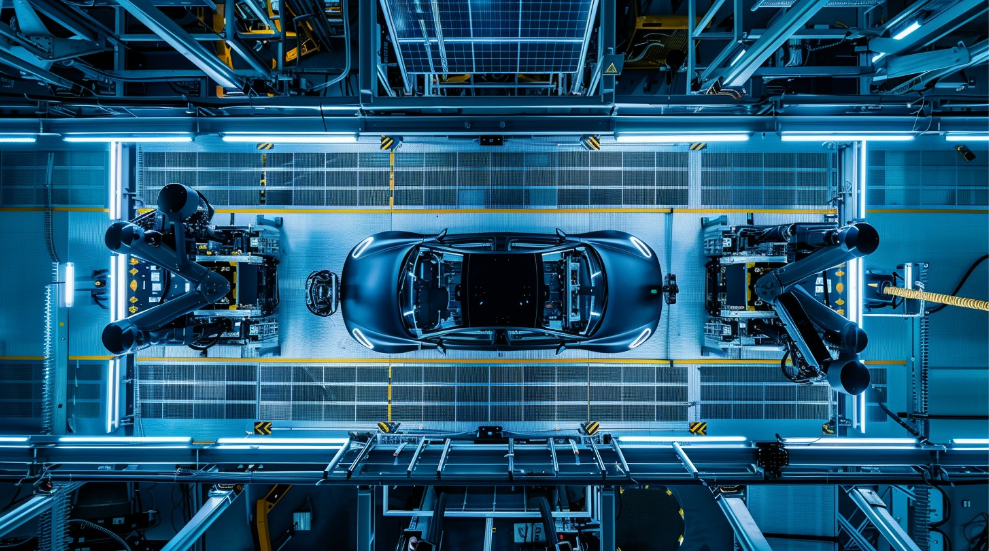The complex and interconnected nature of automobile manufacturing presents significant challenges to producing a vehicle entirely within the United States. While the U.S. is home to some of the world’s largest and most advanced automotive manufacturers, the scale and breadth of global supply chains make it practically impossible to rely solely on domestic resources for complete vehicle production.
One of the primary reasons for this is the vast number of components involved in creating a single vehicle. For instance, an internal combustion engine car contains nearly 30,000 individual parts. Each of these parts must be sourced, manufactured, and assembled before the vehicle is considered complete. This sheer volume of components makes it highly inefficient, if not entirely impractical, to produce every single part in the United States.
A Global Supply Chain
While the U.S. has the capacity to manufacture many vehicle parts domestically, key components like electronics, specialty materials, and precision parts are often sourced from international suppliers. These components are designed, engineered, and produced in various regions across the world, from East Asia to Europe, due to the economic advantages of labor costs, advanced manufacturing technologies, and specialized materials that may not be available domestically.
Additionally, many of these global suppliers have established intricate, well-coordinated supply chains that deliver parts just in time to avoid unnecessary inventory costs. Shifting the entire production of these 30,000 parts to the U.S. would require substantial investments in infrastructure, labor, and technology. It would also demand a restructuring of global supply chains that have been built over decades.
The Impact of U.S. Tariffs on Domestic Manufacturing
Efforts to encourage domestic production through tariffs on foreign-made parts have raised concerns about their long-term effects on the automotive industry. In particular, trade policies like the ones introduced in recent years have made it more expensive to import certain auto parts, which could, in theory, incentivize manufacturers to produce more parts domestically. However, critics argue that these tariffs may backfire by increasing production costs, limiting access to advanced materials and technologies, and ultimately raising prices for consumers.
Yuri Unno, a senior fellow at the Center for Strategic and International Studies (CSIS), argues that U.S. auto tariffs are potentially punishing domestic investment. Rather than fostering a stronger domestic manufacturing sector, the tariffs may unintentionally strain relationships with international suppliers, reduce product quality, and disrupt existing global supply networks.
“The tariffs may create more challenges for U.S. auto manufacturers than solutions,” Unno explained. “Without sufficient domestic capacity for producing all 30,000 parts required for an internal combustion engine vehicle, U.S. automakers may be forced to either outsource production to other countries or face higher production costs at home.”
Looking Ahead: The Shift Toward Electric Vehicles
The emergence of electric vehicles (EVs) offers a potential solution to some of the challenges surrounding domestic production. Unlike traditional internal combustion engine vehicles, EVs rely on fewer parts and can simplify the supply chain. The shift toward EVs also presents an opportunity for the U.S. to establish itself as a leader in the growing electric vehicle market, encouraging investments in domestic battery manufacturing and EV components.
However, even in the EV sector, significant reliance on global supply chains remains. For example, the production of lithium-ion batteries, a core component of electric vehicles, is heavily dependent on materials such as lithium, cobalt, and nickel, which are mined in countries like Australia, the Democratic Republic of the Congo, and Chile. While the U.S. has been investing in securing its own supply of these critical materials, a complete shift to domestic production of EV parts will require significant time, resources, and political will.
Conclusion
The reality of modern automobile manufacturing is that it is not feasible to produce every part of a vehicle in one country. While there is a growing push to bring more manufacturing jobs back to the U.S., the current structure of the global supply chain makes such a transition challenging. The U.S. must balance the desire for increased domestic production with the practicalities of international trade and technological innovation. Moreover, as the auto industry moves toward electric vehicles, opportunities for reshaping supply chains will emerge. However, these efforts will require careful planning, investment, and a cooperative approach to global manufacturing.
The shift toward more localized production may take time, but for now, the auto industry must continue navigating the complex web of global supply chains to keep up with demand and maintain the quality and affordability of vehicles in the marketplace.
Source: “Are U.S. Auto Tariffs Punishing Domestic Investment?” by Yuri Unno, CSIS.



